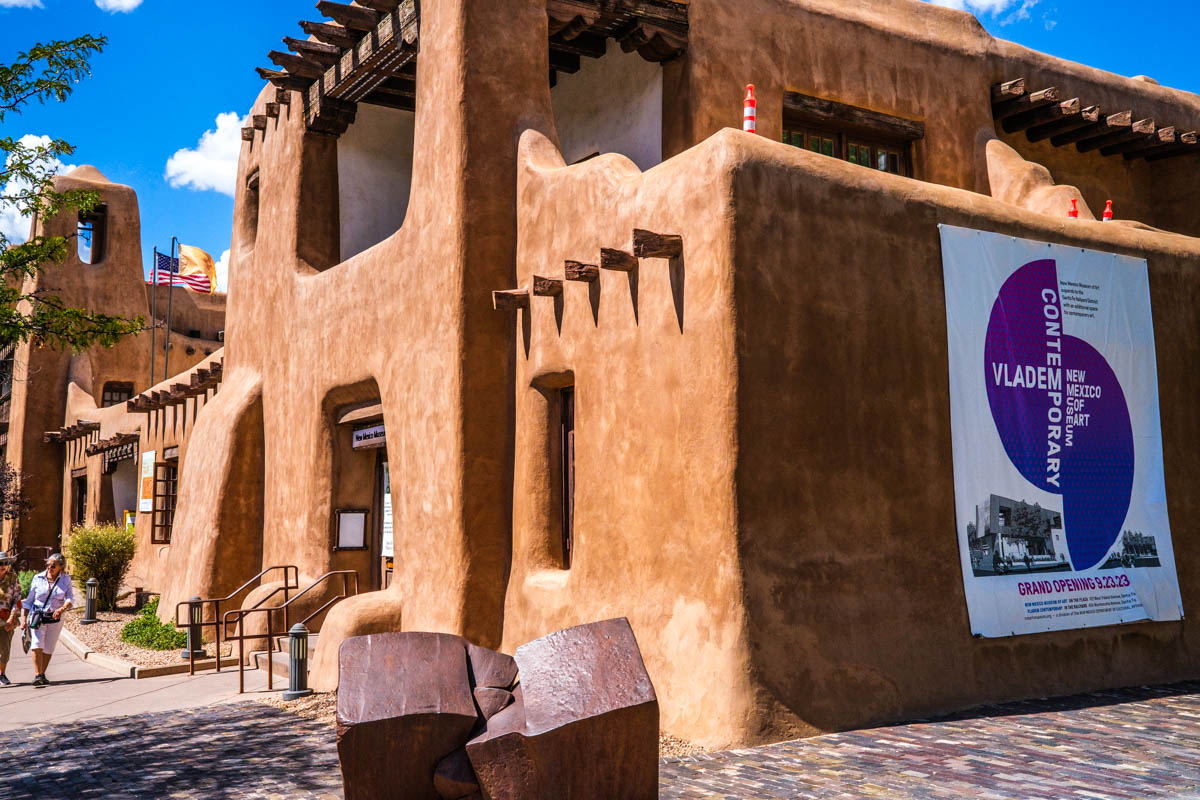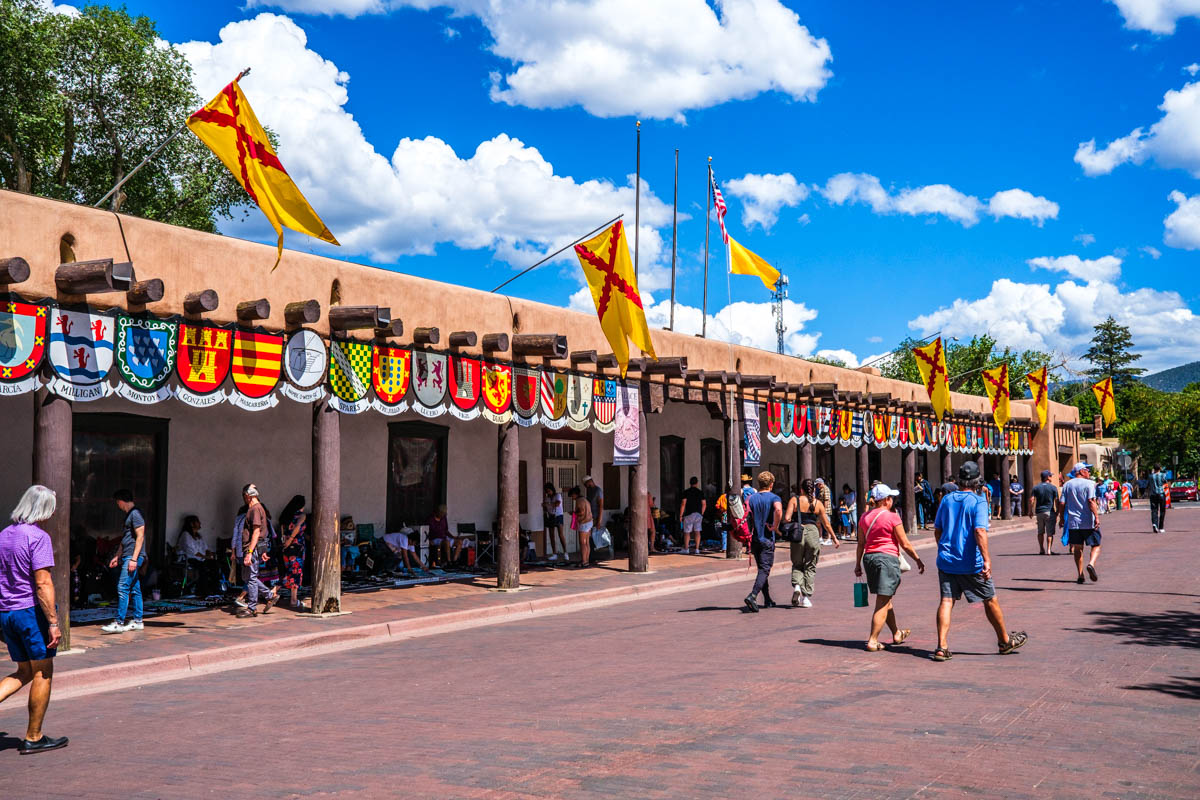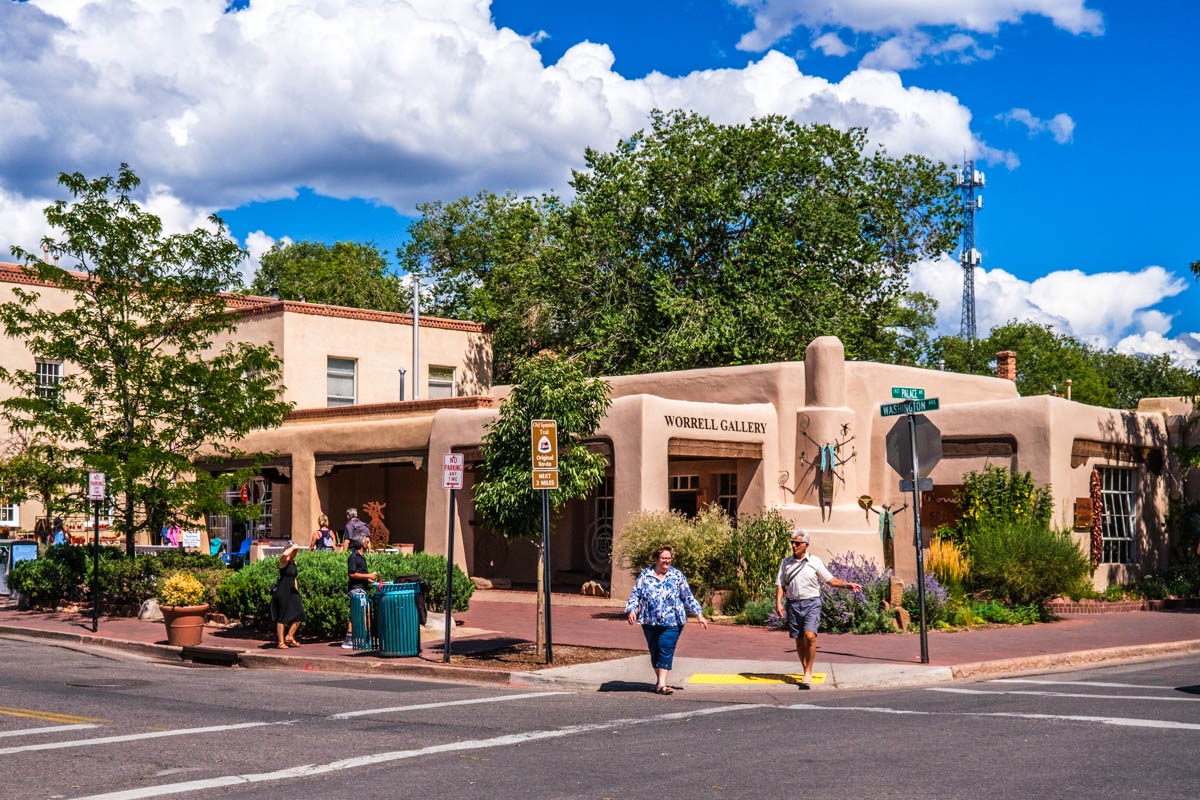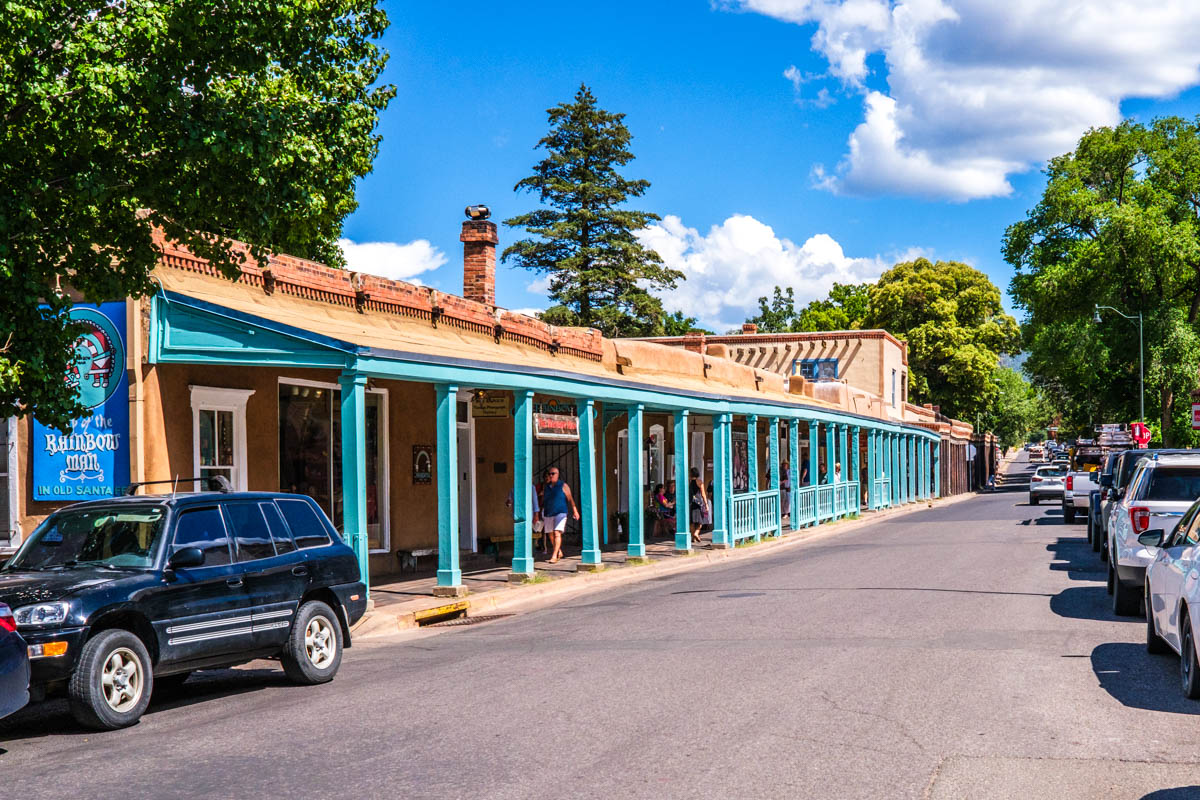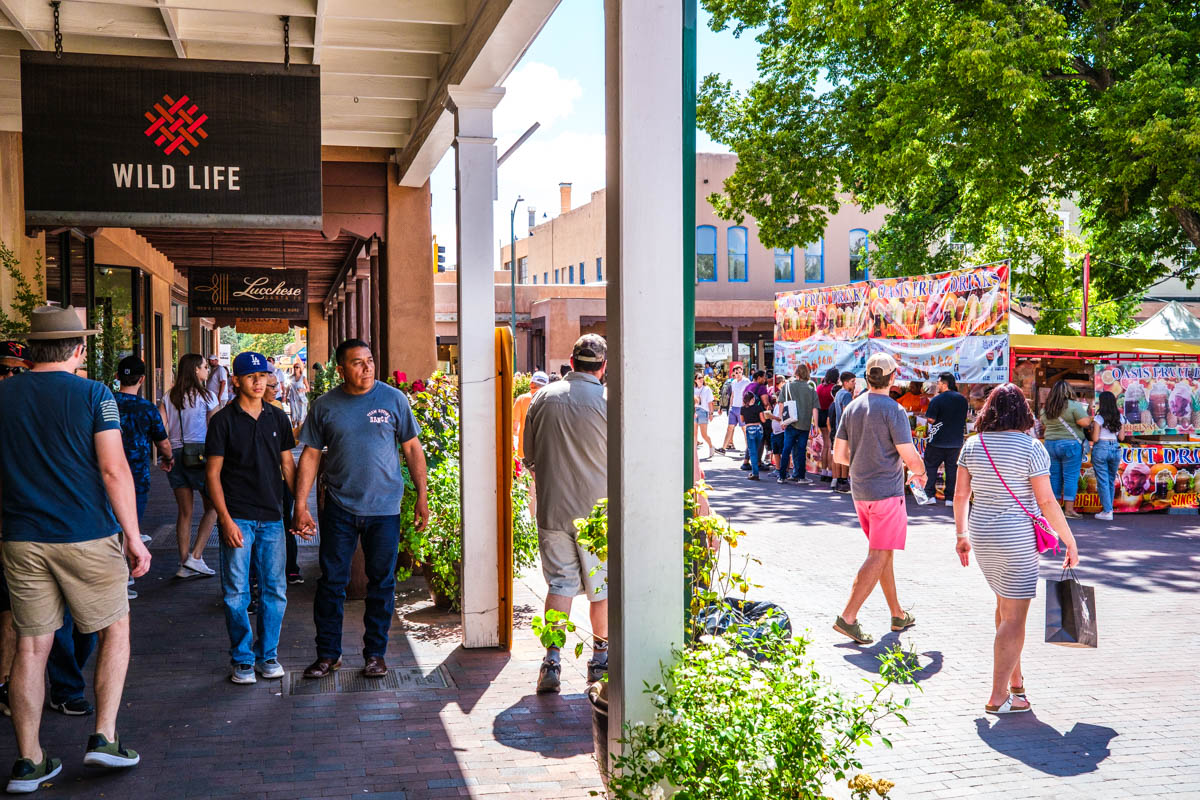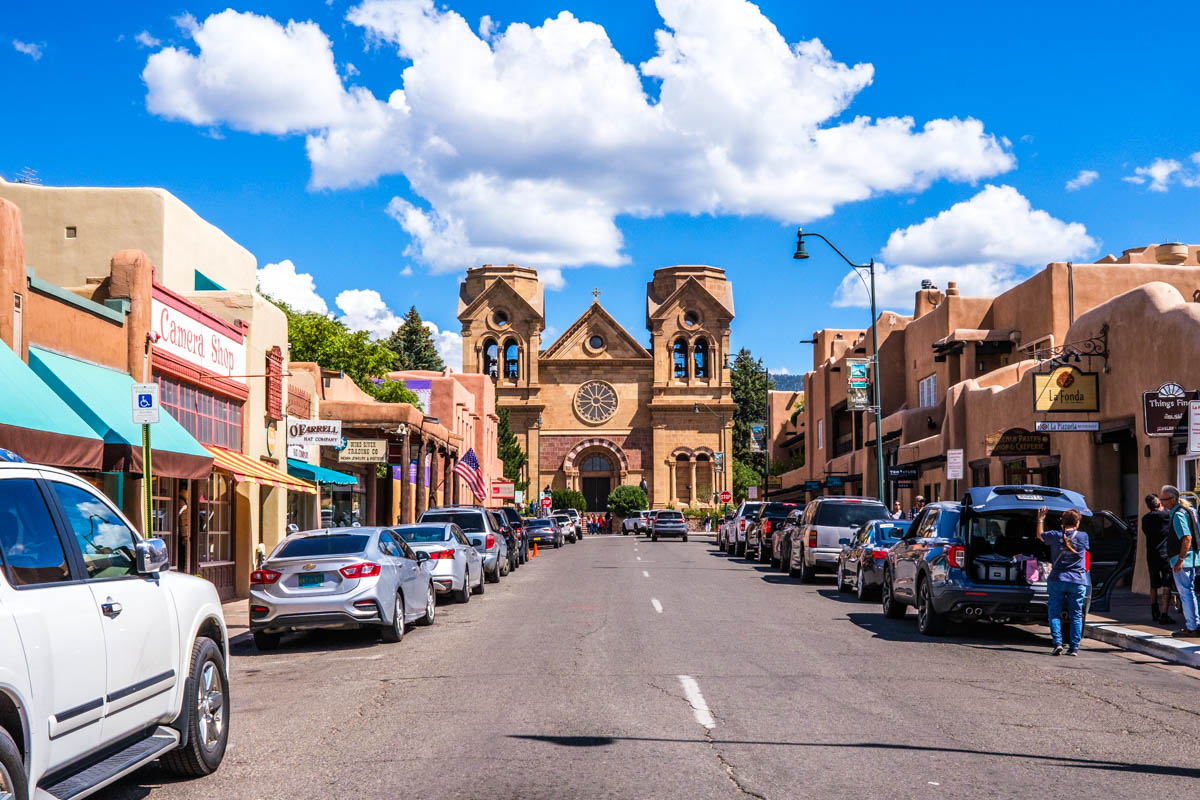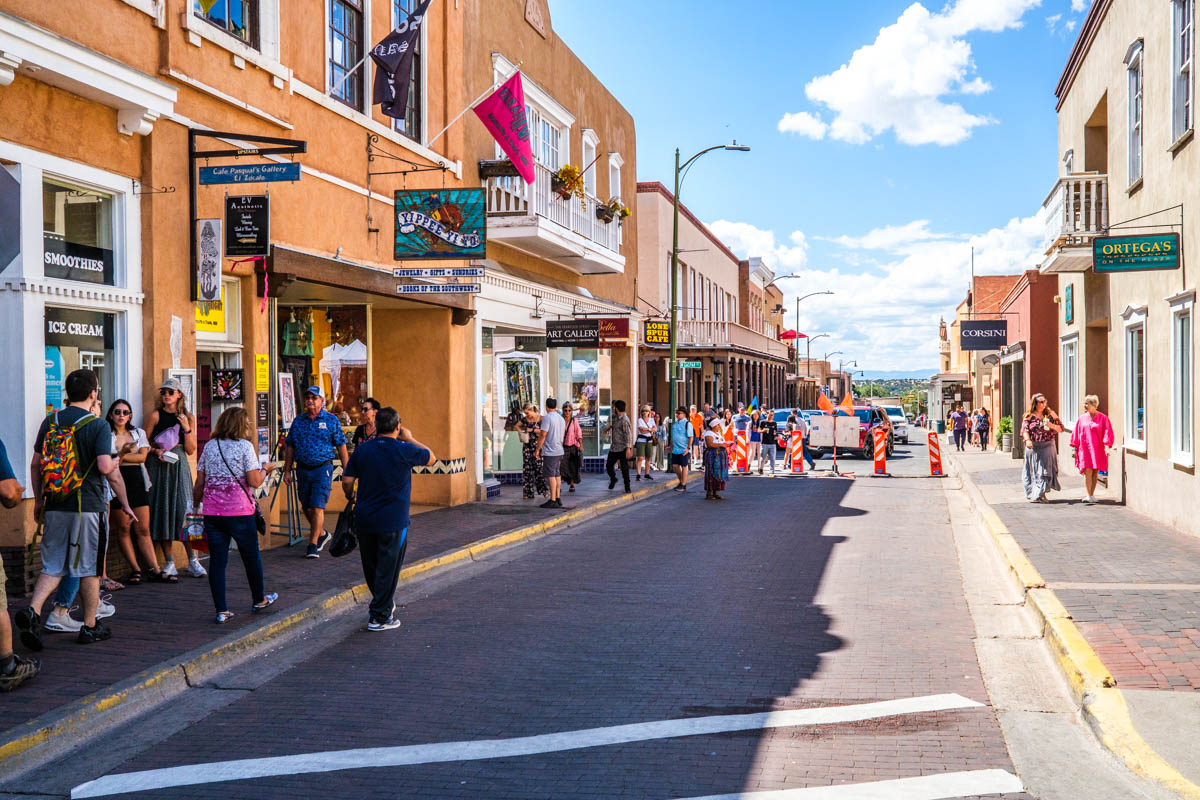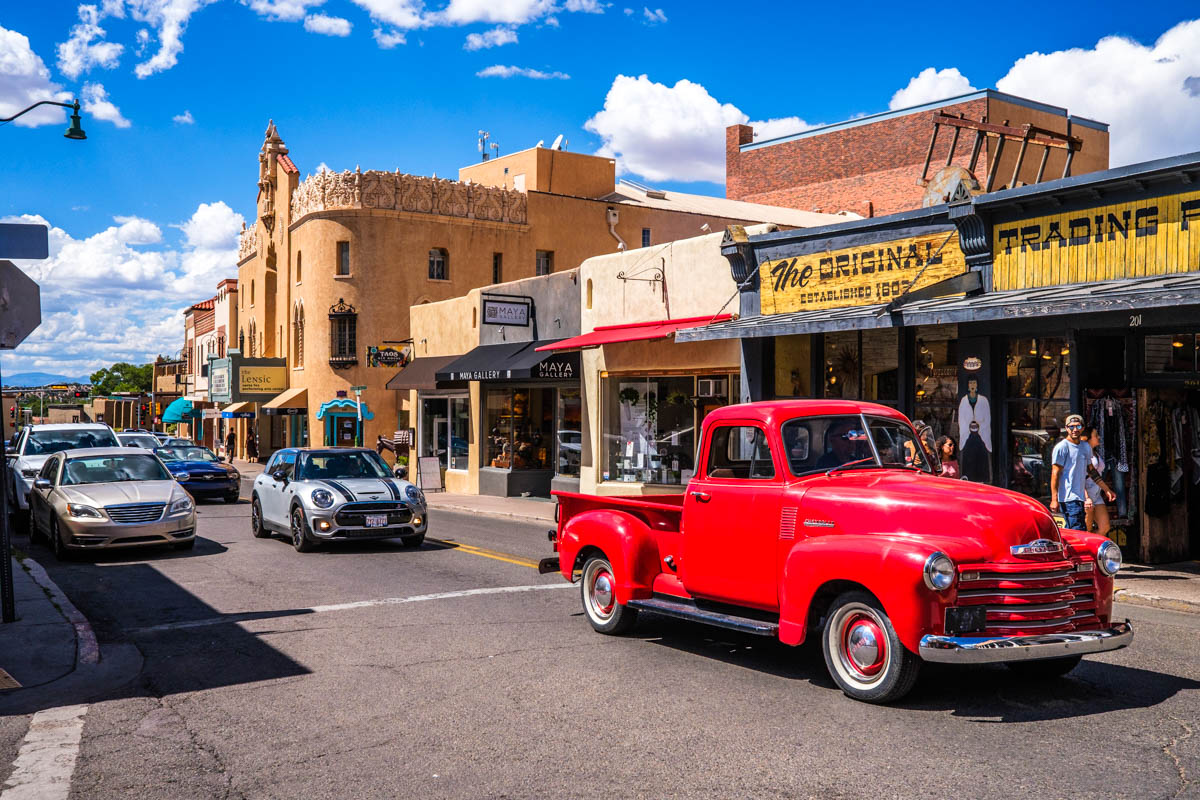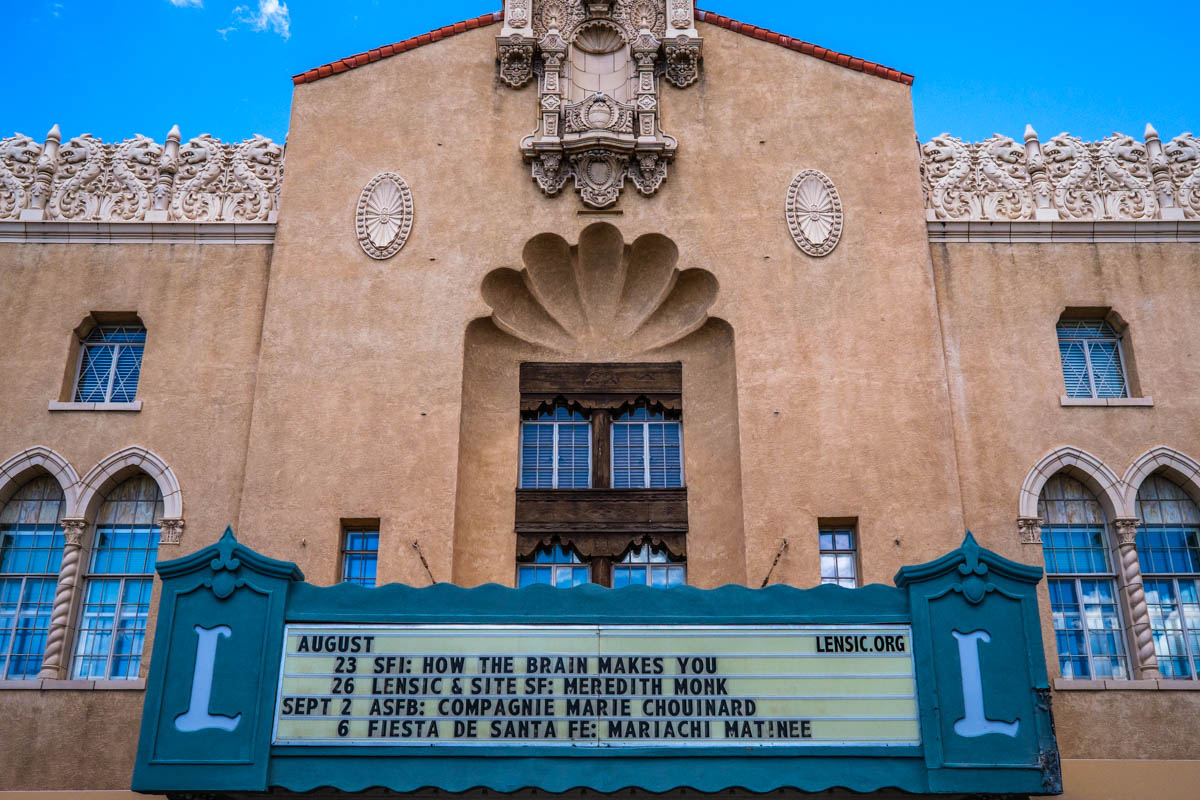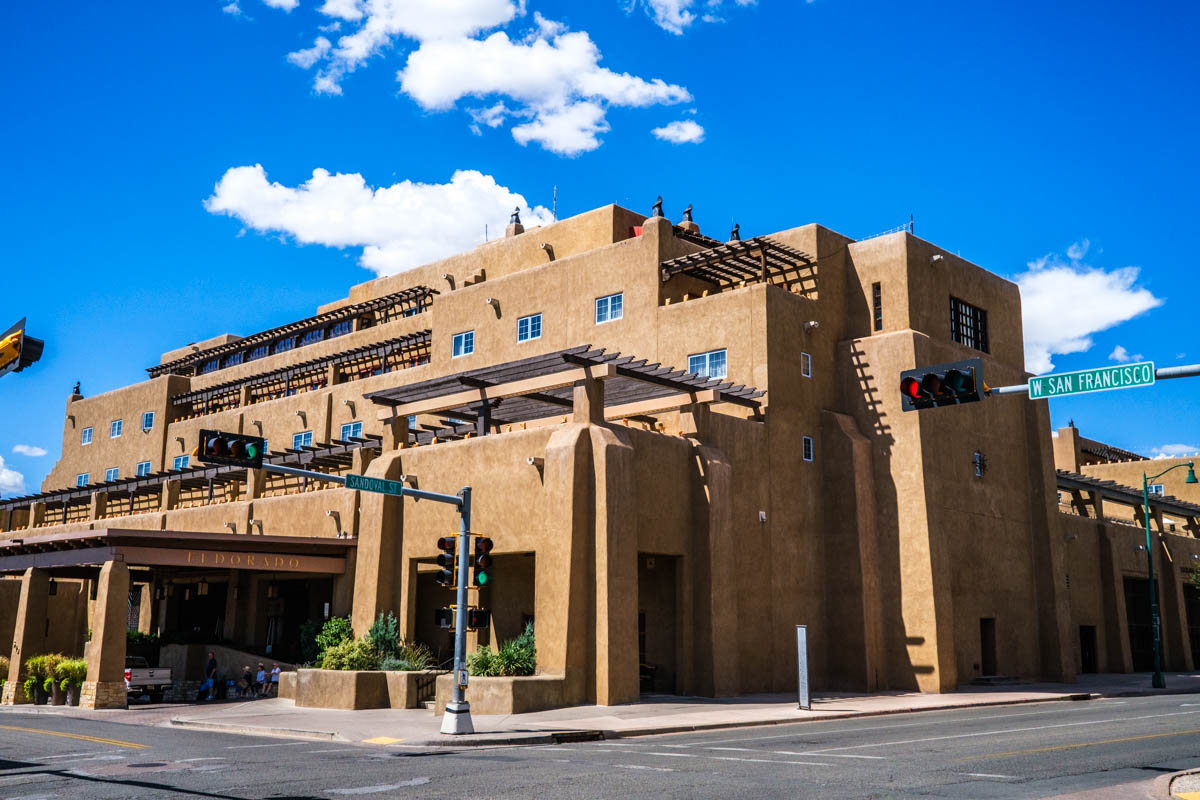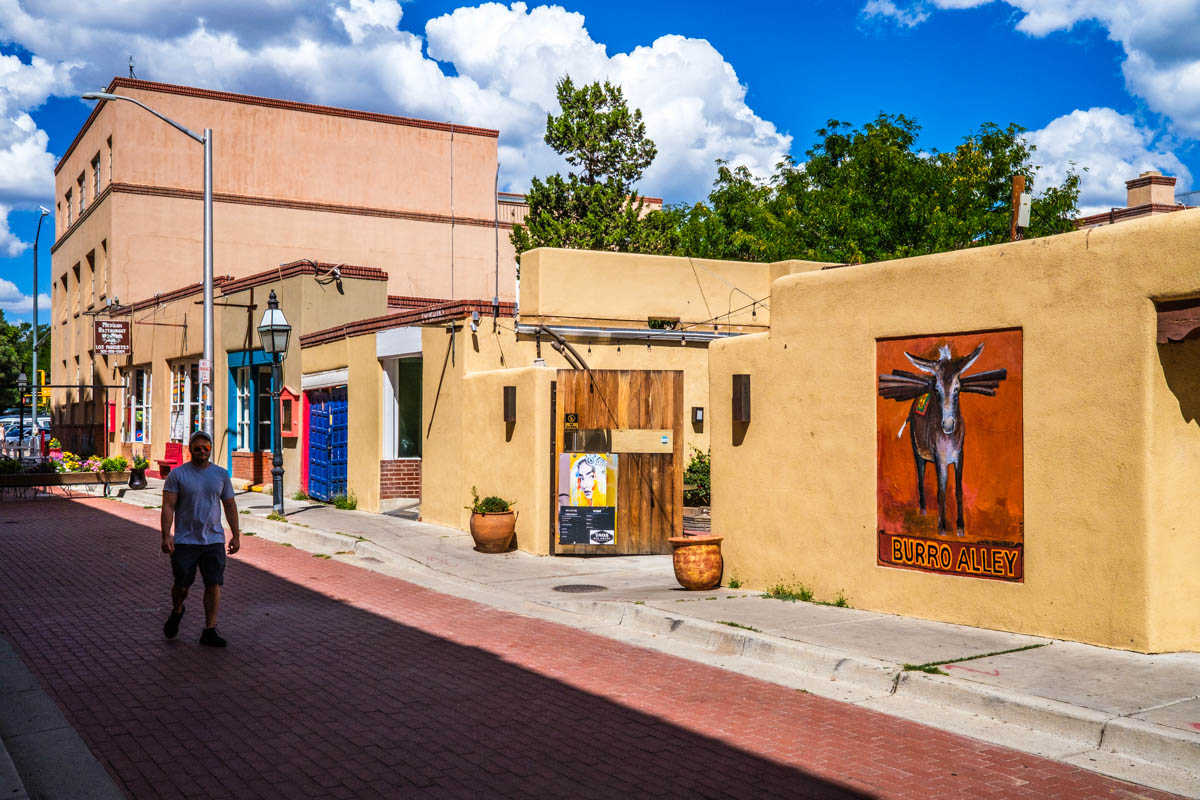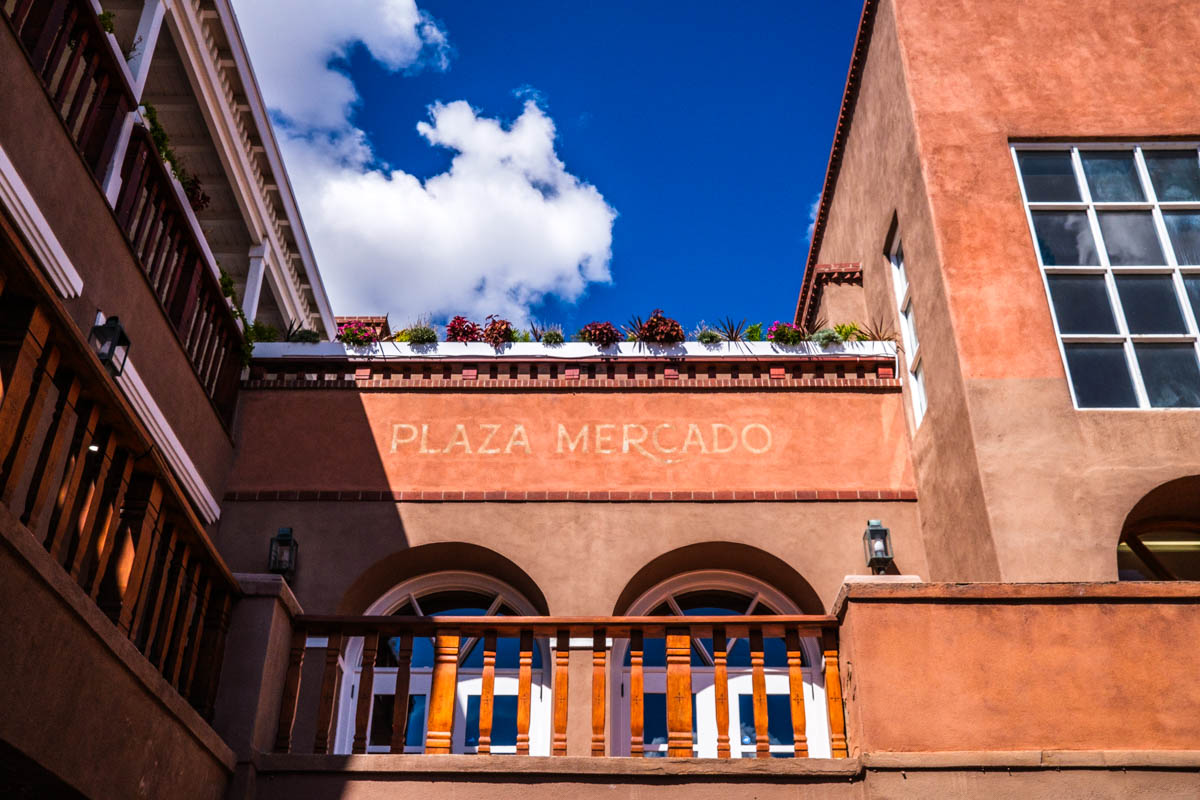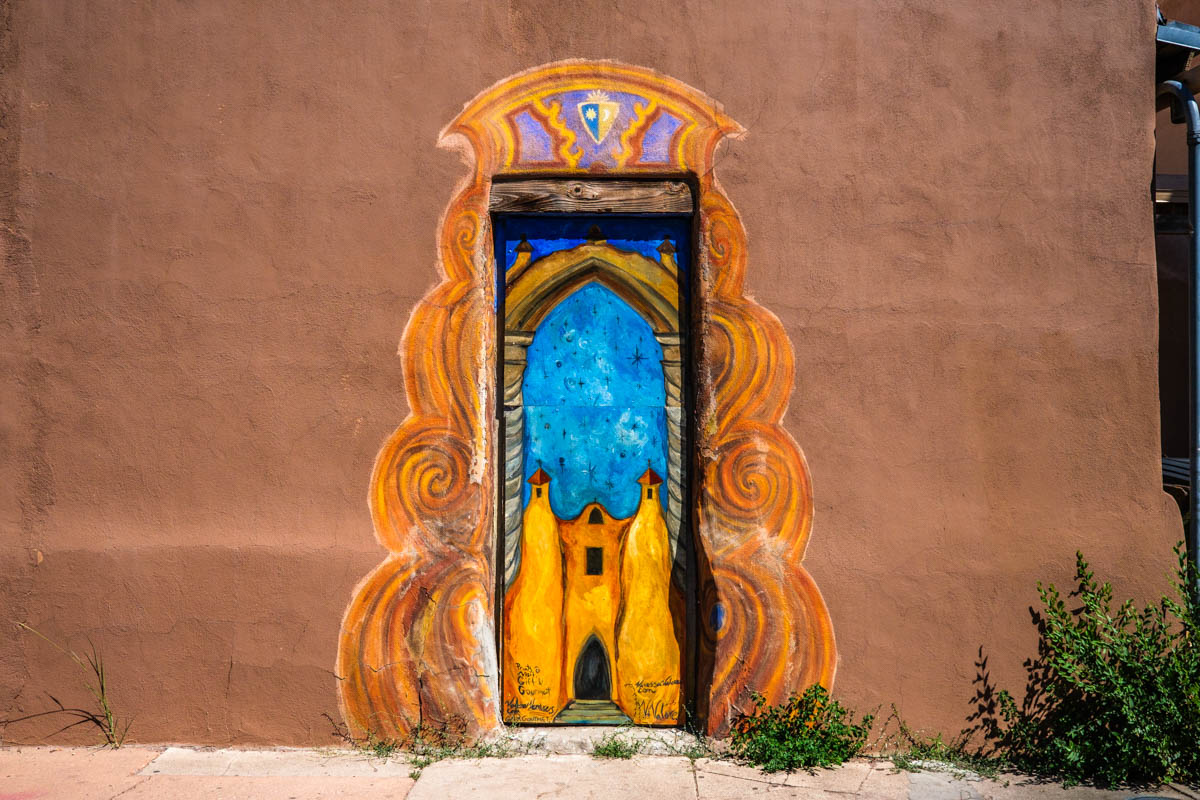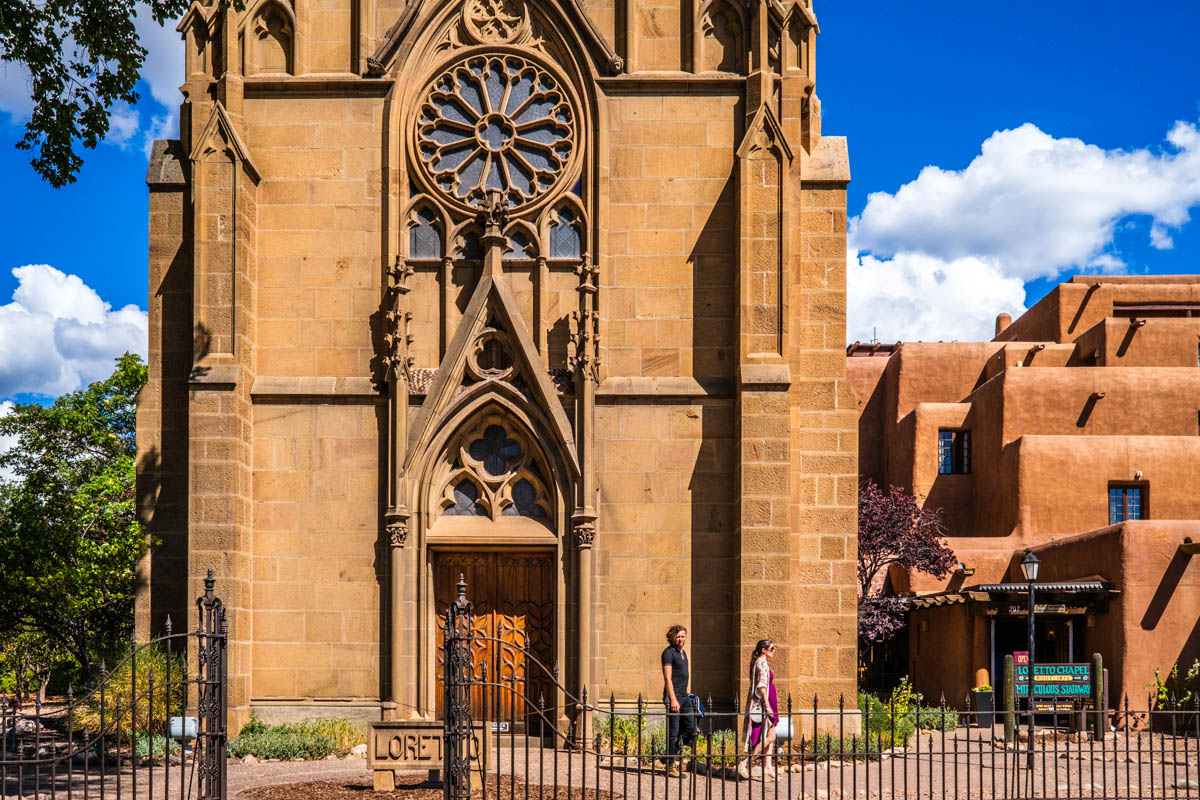SANTA FE | When one things about New Mexican architecture, there’s a particular style that comes to mind. Even if you don’t know what it’s called, you know it when you see it. It was certainly the case for me when I visited the state. These architectural styles are Spanish Pueblo and Territorial, and nowhere are they more prevalent than in Santa Fe.
Walk through central Santa Fe, and you’re surrounded by unique, adobe structure. They’re instantly recognisable for their soft, rounded corners and exposed wooden support beams. Built through the 16th, 17th, and into the 18th century, these structures were inspired by traditional Pueblo adobe homes, but incorporated modern Spanish construction techniques, and Spanish architectural influences.
The buildings look traditional, and it’s easy to assume that they date back hundreds of years. Some do, but in fact many of what appear to be traditional Pueblo Spanish buildings in Santa Fe are in fact, much more modern.
What happened was that Santa Fe was moving with the times. The Santa Fe Trail opened in 1822, connecting Santa Fe to Franklin, Missouri, and much of Central North America. New Mexico became a territory of the United States in 1850. With these developments, Santa Fe was influenced by the Greek Revival Style of architecture that was popular at the time. The version of this that developed in Santa Fe was known as the Territorial Style, and was a pared back take on things.
In the years to come, the architecture of Santa Fe would continue to be influenced by developments and trends in the wider US, and the world, and the uniqueness of the city’s architecture began to be diluted. This spurred a movement in the early 1900s by a group of artists and architects seeking to establish a unique regional identity. It was dubbed Pueblo Revival and Territorial Revival, and popularised throughout the 1920s and 1930s
Pueblo Revival and Territorial Revival buildings look like they’re traditional buildings, but in fact are quite modern. They’re built using modern materials like brick and concrete, with features such as adobe exteriors, and projecting wooden roof beams (vigas) being purely aesthetic.
These ‘modern’ styles aimed at recreating the look of the old, were codified in 1957, when a committee led by architect John Gaw Meem drafted Santa Fe “H” Historical District Regulations Ordinance No. 1957-18. This ordinance mandated the use of the “Old Santa Fe Style”,” which encompassed Pueblo and Territorial styles, on all new buildings in central Santa Fe.
The ordinance is still in effect today, which has had the effect of freezing central Santa Fe’s architecture in time. Walking through Santa Fe today, and two buildings that you assume are as old as each other could in fact have been built hundreds of years apart. Some argue that this makes the city’s architecture not truly authentic, and has contributed to the ‘Disneyfication’ of central Santa Fe. Others argue that it’s helped preserve what might have otherwise been lost, and allowed the city to retain its unique architectural style.
What do you think? Should the architecture of central Santa Fe be allowed to evolve, perhaps using traditional materials and influences in bold new ways, or should it remain frozen in time. Does it matter either way?


